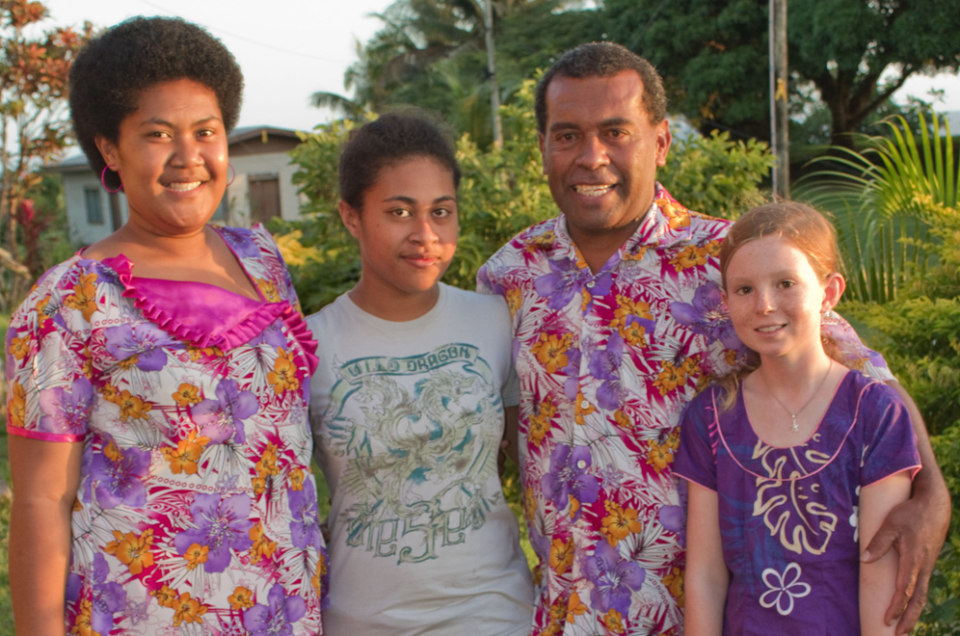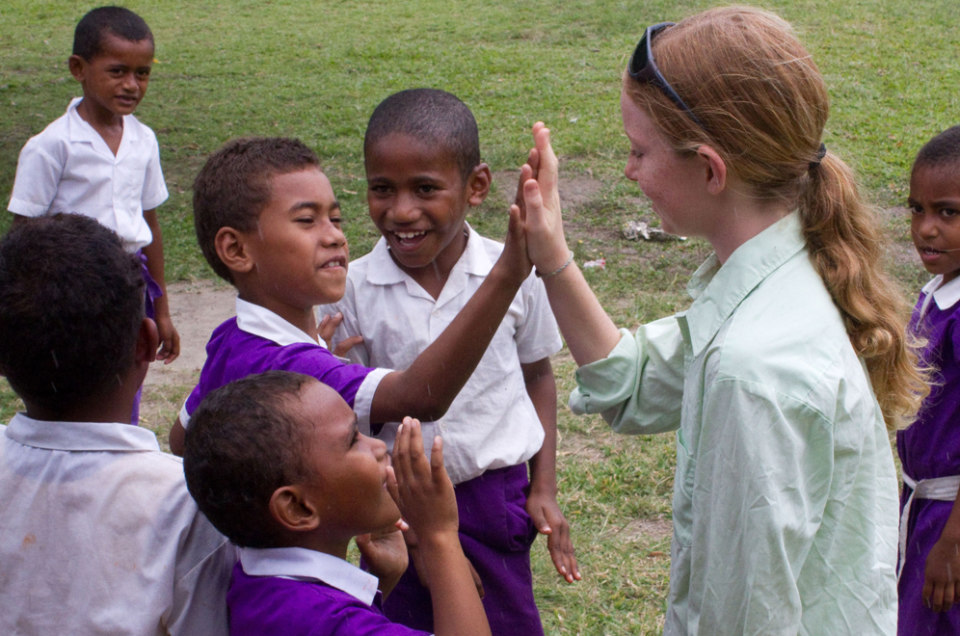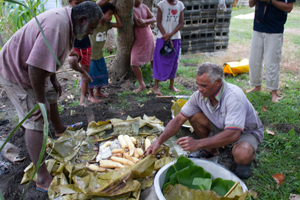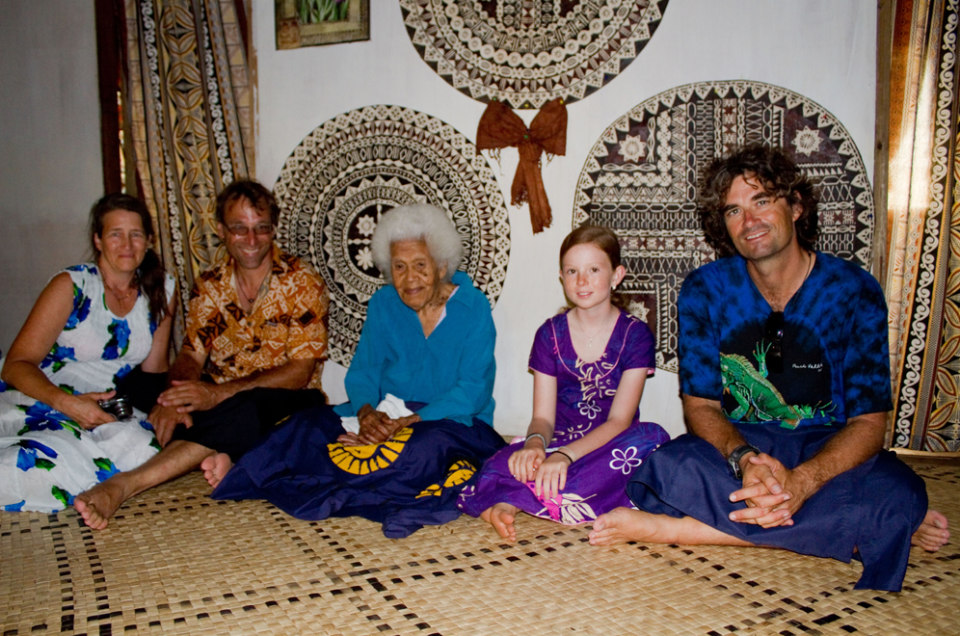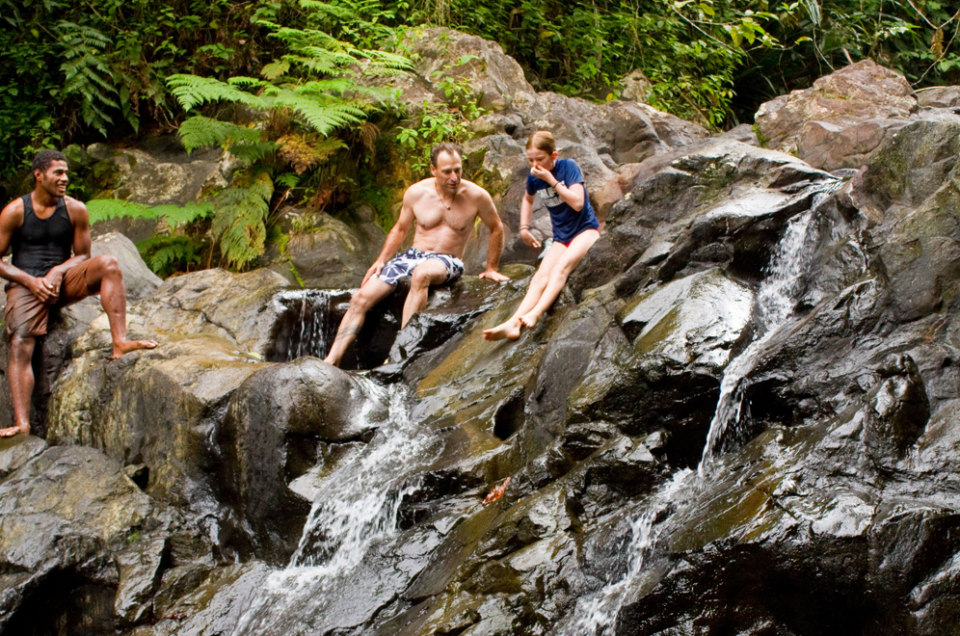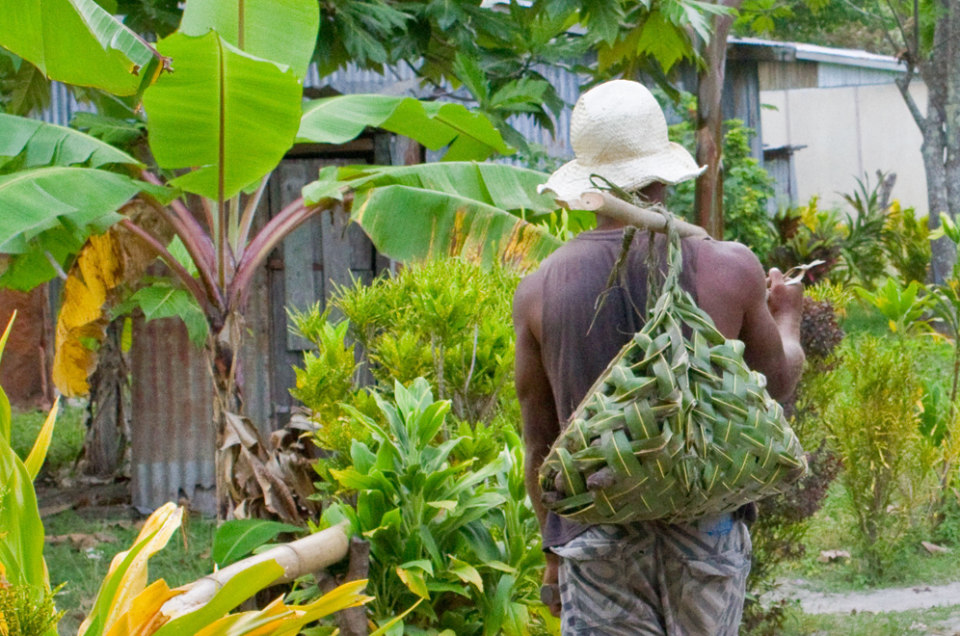“Do you think this is a sevusevu village?” My daughter Maia wondered when we arrived at Nabouwala, a sprawling Fijian village on the island of Vanua Levu. Giving sevusevu is the traditional custom of requesting permission to enter a village, or swim in its waters. It’s died out in some villages while in others the tradition is strictly adhered to.
Not giving sevusevu, basically not showing respect, can lead to bad things: Like being bitten by a shark—according to the gruesomely specific example we were given.
Not wanting to get intimate with the sharp end of a shark on our afternoon snorkel we decided to error on the side of good manners and decked ourselves out in appropriate duds (sulas and bula shirts for the men, long skirts and covered shoulders for the women), gather up our big bouquet of kava root and head to the main street to find the turaga-ni-koro—or chief.
It seems when you ask a Fijian for directions you obligate them to get you to where you are going. And in what felt like a game of ‘pass the parcel’ we were walked down dusty roads, past tin shacks, subsistence gardens, and impromptu games of rugby and were passed from one person to the next, each increasing up in rank until Waisea, the headman, claimed us as his responsibility and walked us up a steep hill to an ancient marae-like site where the chief’s mataqali lived (extended family). He finally told us that yes, we were in a traditional village and the chief—an elderly woman of 97 would receive our sevusevu. But first he needed to don his own sula and give notice to the chief’s family so they could prepare her for our visit.
Waisea tutored us on the protocol of giving sevusevu, but as he tried to teach my husband, Evan the long string of Fijian he needed say to make our offering we quickly decided that Waisea should probably say it for us. Soon we were calling the traditional greeting outside the chief’s bure (instead of knocking) and slipping off our shoes we entered when we heard the call of response.
Our host was one of the few female chiefs in Fiji and she’s thought to be the oldest. Her territory includes not only the village itself but several off-lying islands. Despite her age she seemed delighted by our visit and she smiled happily through the long ceremony—where our story was repeated around the circle–and we clapped on cue and tried to say the right things in the right moments. Despite making a few errors here and there, our kava was accepted and we were welcomed into the village. We were now brothers and sisters and our daughter Maia was a village daughter.
Fiji is beautiful—who could find fault in luscious islands, tropical reefs and powder white beaches? But it’s the people who invite you into their homes and culture so generously who truly make the country special.
Fiji comes by its friendly reputation honestly, in just a few days Maia learned more foreign language skills than months of school French had taught her. The reason is you can not pass a person or enter a store without someone greeting you and striking up conversation. And though everyone speaks English, to a degree, everyone seems to take pleasure in teaching a few words of Fijian:
Hello is bula!
Goodbye is moce
Yes is io
No is sega
Thank you is vinaka
“It’s such fun to speak,” Maia told me as we shopped for vegetables. The shopkeeper was busy trying to teach Maia how to say daughter, luvequ yalewa an effort that was resulting in more giggles than success. Being taught how to say lovo was easier but understanding its meaning came later.
A lovo is a special meal in Fiji that is used for weddings, birthdays, fundraisers and other special gatherings. And the lovo we attended was to help raise money for the local elementary school. When we arrived the men were digging up an earthen oven where they pulled bundles of chicken and fish, white yam and stuffed pumpkin from the steaming pit. Then one of the women placed salusalus (leis) around our necks and we were guided to the feast area where we were seated on the mat around a long, laden tablecloth.
Explaining the food–the fish caught by that uncle, the breadfruit cooked by that aunt, the pulusami (stuffed taro leaves) made by that sister–the women who made the meal scolded us into filling our plates. As we ate the starchy dalo (taro), tavikoa (cassava), fish in miti sauce (thick coconut cream combined with onions, chillies, lemon juice, salt and pepper) we complimented the cooks, talked and joked, and ate some more.
On our final walk through the village I was amazed by what a big place in my heart had been given over to it in such a very short time. We said moce at the school—where Maia had been welcomed and shown classes and school work. Then we stopped for final hugs at homes where we had been shown how floor mats were woven, taught about what grows in the gardens and invited in for visits and meals. As we said goodbye we were given a few final words, Vanuinui vinaka e nomu volau good luck with your travels.
